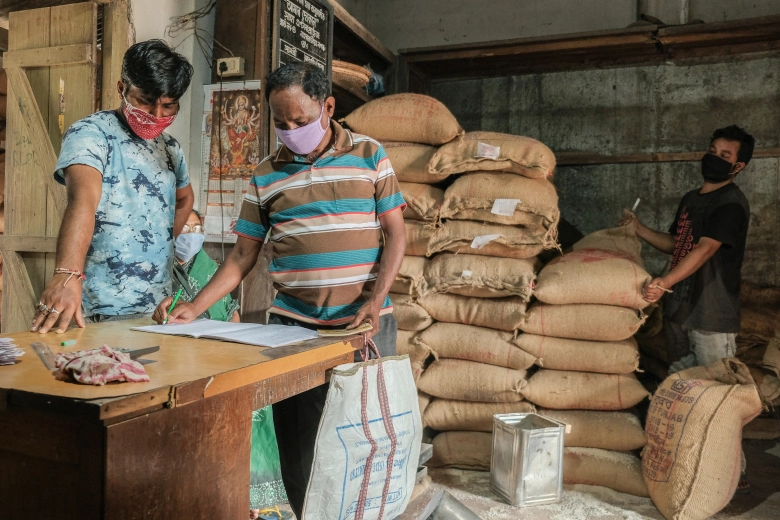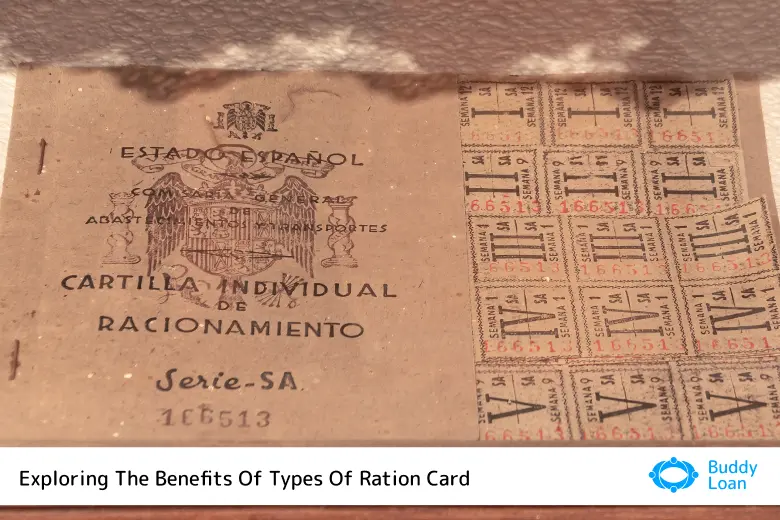A Ration Card is an essential document in India that allows households to purchase subsidized food grains from the Public Distribution System (PDS). This guide provides detailed information on how to apply for a Ration Card online, the eligibility criteria, required documents, and the benefits. Know more about the Ration Card and its benefits.
| India extends free ration scheme for 5 years i.e. Pradhan Mantri Garib Kalyan Anna Yojana or PM-GKAY. The central government will be extending the scheme providing free ration to 80 crore poor people of the country for the next five years. |
What is a Ration Card?
The State Government Of India issues an identification Card for the citizens particularly to avail subsidized food items, fuel, and other produce from PDS (Public Distribution Systems) for equal distribution of resources. This makes room for fair use of resources and 0 hoarding while preventing any fraudulent practices. Now, with the facility of an e-ration card, the data management is aligned and records are tracked easily.
| Ration Cards serve as a common identification card for the Indians and mostly serve better for the people who make a living on daily wages, no income houses, widows and the differently abled too. |
Types of Ration Cards
In India, there are different types of Ration Cards based on the economic status of households, namely:
- Above Poverty Line (APL) Card
- Below Poverty Line (BPL) Card
- Antyodaya Anna Yojana (AAY) Card
Above Poverty Line (APL) Card
This Card system came into existence before the NFSA Act in 2013, determined by the planning commission, per the state-specific allocations. It was issued to households above the poverty line who were entitled to a portion of the food grains and commodities from the DS. The APL Card failed because of the inefficiency in distribution and not meeting the social welfare management, especially for the poor. Thus, leading to the exclusion of eligible beneficiaries and the inclusion of ineligible ones. Moreover, the fixed allocation of food grains without considering the actual consumption needs of households was seen as a drawback.
Below Poverty Line (BPL) Card
Issued to households living below the poverty line, BPL cards provided access to subsidized food grains. The quantity and types of food grains available to BPL cardholders were generally higher than those provided to APL cardholders. The BPL card was a significant component of the government’s poverty alleviation programs.
Similar to the APL card, the BPL card system faced challenges related to the identification of eligible beneficiaries and leakages in the distribution system. The process of identifying and categorizing households as BPL was often subjective and prone to errors.
Also Read: Download Aadhar Card with Mobile Number
Antyodaya Anna Yojana (AAY) Card
Targeted at the poorest of the poor, the AAY card was introduced to provide food security to the most vulnerable sections of society. AAY households were entitled to a larger quantity of food grains at highly subsidized rates compared to APL and BPL cardholders.
The AAY scheme was considered a more focused approach to addressing poverty and hunger. However, challenges such as accurate identification of the poorest households and ensuring that benefits reached the intended beneficiaries remained persistent.
It’s important to note that the APL and BPL categories have been replaced by the Priority Household (PHH) and Non-Priority Household (NPHH) categories under the NFSA. While the basic principles remain similar, the NFSA introduced a more targeted and streamlined approach to ration card distribution.
Personal Loan
Quick Approval in 24 Hours
💰 No processing fee for first 100 customers | ⚡ Digital KYC in 5 minutes
Also Read: TNPDS Check Ration Card Status and Apply for Smart Cards Online

Eligibility Criteria
To be eligible for a Ration Card, applicants must meet the following criteria:
– Must be an Indian citizen
– Should not possess any other state-issued Ration Card
– Must meet the income criteria or zero income specified by the state government
Note: The eligibility criteria may, however, differ from state to state with the moving public and defined PDS’s rules and regulations.
Required Documents
When applying for a Ration Card, you need to submit the following documents:
– Proof of Identity (Aadhaar Card, Voter ID, Passport)
– Proof of Address (Utility Bill, Rent Agreement)
– Income Certificate is the most important document
– Passport-sized Photographs
– Old Ration Card (if applicable)
How to Apply for a Ration Card Online
Follow these steps to apply for a Ration Card online:
1. Visit the Official Website: Go to the official PDS portal of your respective state/UT.
2. Register/Login: Create an account or log in if you already have one.
3. Fill out the Application Form: Provide all required details accurately in the application form.
4. Upload Documents: Upload scanned copies of the required documents.
5. Submit the Application: Review your details and submit the application.
6. Application ID: Note down the application ID for future reference.
0
Bad
Check your Credit Score for Free
Your credit score is updated monthly and gives you insight into your creditworthiness. Take control of your financial future today.
Some of the PDS portals for particular states
| Karnataka | https://ahara.kar.nic.in/ |
| Jammu & Kashmir | https://jkfcsca.gov.in/ |
| Gujarat | https://fcsca.gujarat.gov.in/index.htm |
| Goa | https://www.goa.gov.in/department/department-of-civil-supplies-and-consumer-affairs/ |
| Madhya Pradesh | https://rationmitra.nic.in/EBS/Public/DistrictWiseRCSummary.aspx |
Also Read: Andhra Pradesh Ration Card Status
Benefits of a Ration Card
Having a Ration Card provides several benefits, such as:
– Access to subsidized food grains and other essential commodities
– Proof of identity and address
– Eligibility for various government schemes and benefits
Also Read: Aadhar Update Online
Conclusion
Applying for a Ration Card online is a straightforward process that provides numerous benefits to eligible households. Ensure you have all the necessary documents and meet the eligibility criteria before applying. For any queries or assistance, refer to the FAQs or contact your local PDS office.
Having any queries? Do reach us at info@buddyloan.com
Frequently Asked Questions
Q. How long does it take to get a Ration Card?
A. The processing time for a Ration Card can vary from state to state but generally takes about 15-30 days.
Q. Can I apply for a Ration Card offline?
A. Yes, you can apply for a Ration Card offline by visiting the nearest PDS office and submitting the application form with the required documents.
Q. How can I check the status of my Ration Card application?
A. You can check the status of your Ration Card application on the official PDS portal of your state using your application ID.
Q. What are the three types of ration cards?
A. The three types of ration cards are Antyodaya Anna Yojana (AAY), Priority Household (PHH), and Non-Priority Household (NPHH).
Q. Which color ration card is best?
A. The Antyodaya Anna Yojana (AAY) ration card, typically red, is considered the best due to its benefits for the poorest families.
Q. How many ration cards are there in India?
A. India has multiple types of ration cards, including AAY and PHH, designed to serve different economic categories.
Q. How many types of ration cards are there in Maharashtra?
A. Maharashtra has three main types of ration cards: AAY, PHH, and Non-Priority.
Q. What is the eligibility for obtaining a ration card in India?
A. Eligibility for a ration card typically includes residency, income criteria, and family size as defined by state governments.
Q. How can I apply for a ration card in India?
A. Applications for a ration card can be made online or offline through the respective state government’s food and civil supplies department.
Q. Is there a renewal process for ration cards?
A. Yes, ration cards may require periodic renewal or updates based on changes in family status or income.

